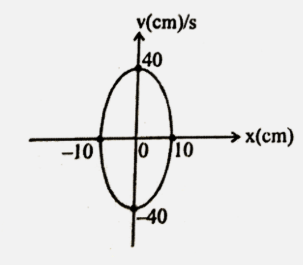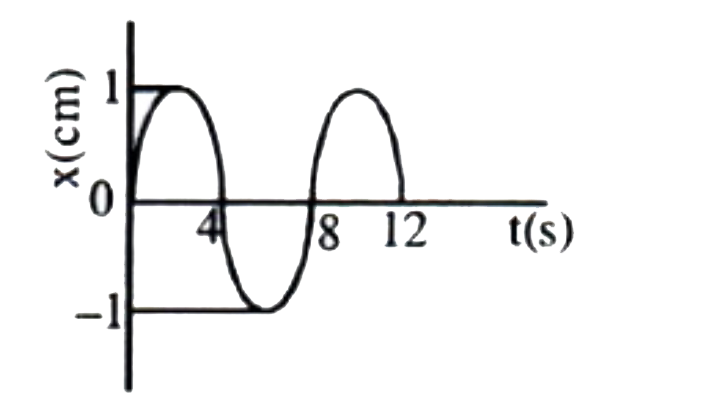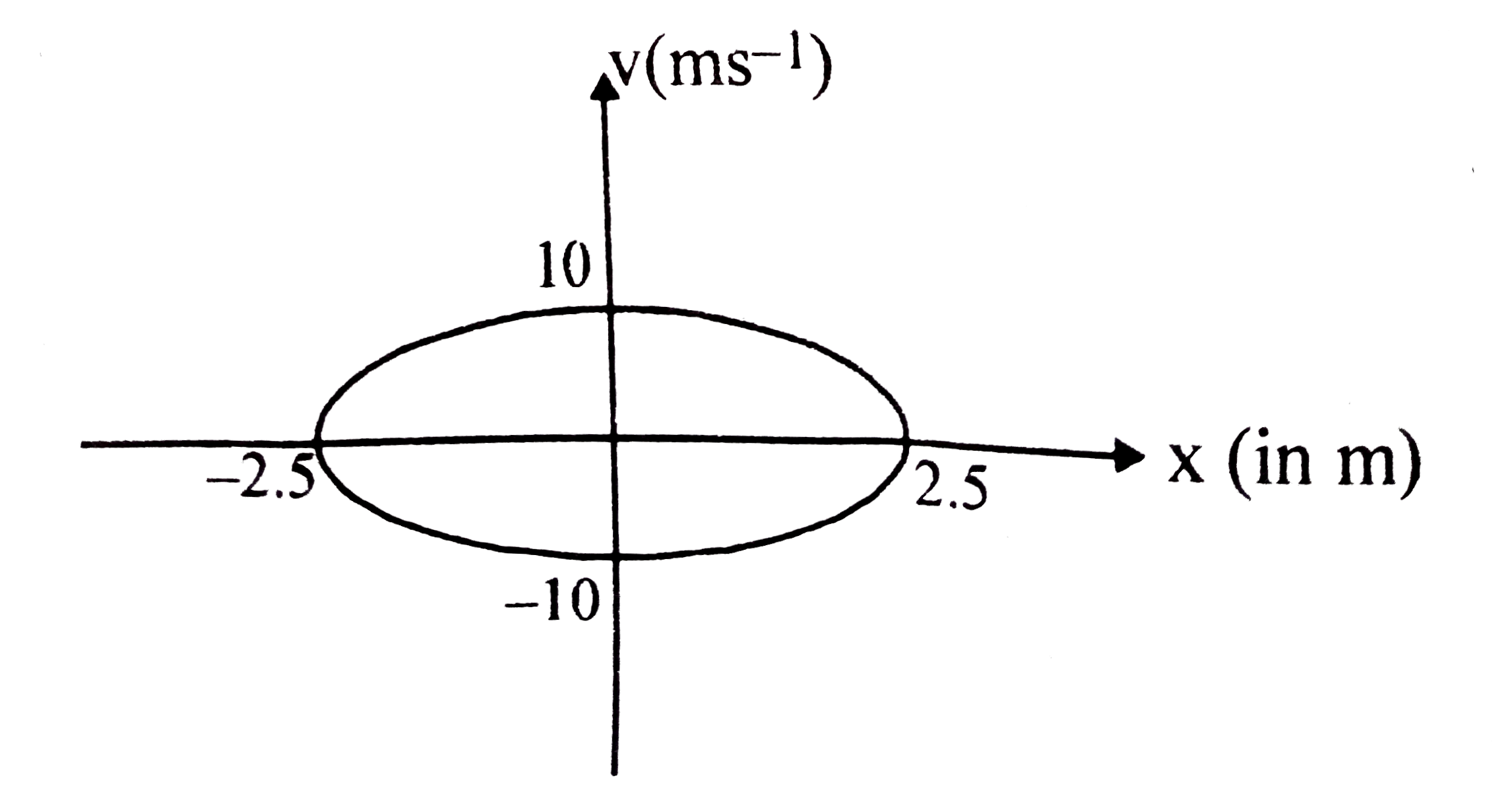If x,v and a denote the displacement, velocity and acceleration of a particle exceuting simple harmonic motion of time period T, then, which of the following does not change with time.
(1) a2T2+4π2v2 (2) aTx
(3) aT=2πv (4) aTv
By verification
aTx=ω2xTx=4π2T2×T=4π2T= constant. i.e., quantity aTx does not change w.r.t. time.
Topper's Solved these Questions
- BOOK - NARAYNACHAPTER - OSCILLATIONSEXERCISE - C.U.Q78videos
OSCILLATIONS
- BOOK - NARAYNACHAPTER - OSCILLATIONSEXERCISE - LEVEL -I (C.W)34videos
OSCILLATIONS
- BOOK - NARAYNACHAPTER - NEWTONS LAWS OF MOTIONEXERCISE - PASSAGE TYPE QUESTION6videos
NEWTONS LAWS OF MOTION
- BOOK - NARAYNACHAPTER - PHYSICAL WORLDEXERCISE - C.U.Q10videos
PHYSICAL WORLD
Similar Questions
The plot of velocity (v) versus displacement (x) of a particle executing simple harmonic motion is shown in figure. The time period of oscillation of particle is :-
 View Solution
View SolutionThe x-t graph of a particle undergoing simple harmonic motion is shown below. The acceleration of the particle at t=23s is
 View Solution
View Solution
Knowledge Check
- Question 1 - Select One or More
If x,v and a denote the displacement, the velocity and the acceleration of a particle executing simple harmonic motion of time period T, then, which of the following does not change with time ?
AaTxBaT+2πvCaTvDa2T2+4π2v2 - Question 2 - Select One
If x, and a denote the displacement, the velocity and the acceler of a particle executing simple harmonic motion of time period T, then, which of the following does not change with time?
A(a) aT/xB(b) aT+2πvC(c ) aT/vD(d) a2T2+4π2v2 - Question 3 - Select One
If x,v and a denote the displacement, the velocity and the acceleration of a particle executing simple harmonic motion of time period T, then, which of the following does not change with time ?
AaTxBaT+2πvCaTvDa2T2+4π2v2
If the displacement velocity and acceleration of a particle at time t be x,v and f respectively, then which one is true?
View SolutionIf, at time t, x is the displacement and v the velocity, then acceleration at that time is
View SolutionIf the displacement (x) and velocity (v) of a particle executing simple harmonic motion are related through the expression 4v2=25−x2, then its time period is given by
View SolutionThe figure shows graph between velocity 'V' and displacement 'X' from mean position of a particle performing simple harmonic motion

The time period of motion of particle is:View SolutionA particle exectuing simple harmonic motion of time period T has x V and as its displacement , velocity and ecceleration , rexpectively . Which of the following quantities does not change with time ?
View Solution

